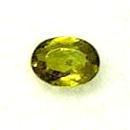|
|
||||||||||||||||
|
||||||||||||||||
|
||||||
|
|
|
|
Bastnäsite-(Ce)
|
|
| | |
| Discovered in 1841; IMA status: Valid (pre-IMA; Grandfathered) | ||
|
| ||
|
Chemistry |
|
|
| |
|
Ce(CO3)F | |
|
|
Cerium Carbonate Fluoride |
|
Molecular Weight: |
219.12 gm |
|
Composition: |
Cerium |
63.94 % |
Ce |
74.90 % |
Ce2O3 |
|
|
Carbon |
5.48 % |
C |
20.08 % |
CO2 |
|
|
Oxygen |
21.90 % |
O |
|
|
|
|
Fluorine |
8.67 % |
F |
8.67 % |
F |
|
|
- |
- % |
F |
-3.65 % |
-O=F2 |
|
|
|
100.00 % |
|
100.00 % |
= TOTAL OXIDE |
|
|
|
||||
|
Classification |
|
|
| |
|
Carbonates | |
|
5/C.07-30 | |
|
|
5 : CARBONATES (NITRATES)
|
|
Related to: |
Bastnäsite Group. Cerium analogue of Bastnäsite-(La) and Bastnäsite-(Y). Fluorine analogue of Hydroxylbastnäsite-(Ce). Bastnäsite-(Ce)-Hydroxylbastnäsite-(Ce) Series. 4H, 6R, 3R polytypes. |
|
Members of Group: |
Bastnäsite Group: Bastnäsite-(Ce), Bastnäsite-(La), Bastnäsite-(Y) |
|
Varieties: |
None |
|
Synonyms: |
Bastnaesite, Basic Fluocerine, Basikfluorcerium, Basiskfluor-cerium, Bastnaesite-(Ce), Buszite, Hamartite, Hemartite, Hydrocerite (of Glocker), Hydrofluocerite, Kischtimite, Kischtim-Parisite, Kyshtymoparisite, Sub-fluate of cerium |
|
|
|
|
Crystal Data |
|
|
|
|
|
Commonly in tabular to equant crystals, may be modified, horizontally striated, may be elongated, commonly in syntaxic intergrowth with röntgenite-(Ce), synchysite-(Ce), parisite-(Ce), or cordylite-(Ce), to 20 cm; granular, massive. |
|
|
None |
|
|
|
|
|
Physical Properties |
|
|
|
|
|
Imperfect on {1011}, Indistinct on {0001} |
|
|
Uneven |
|
|
Brittle |
|
|
4.0 - 4.5 |
|
|
4.90 - 5.20 (g/cm3) |
|
|
Dark red Cathodoluminescence |
|
|
Weak; GRapi = 60,386.61 (Gamma Ray American Petroleum Institute Units) |
|
|
Other: |
Strongly Piezoelectric. Soluble in strong, hot acids. May be found as pseudomorphs after Fluocerite or Tscheffkinite. |
|
|
|
|
Optical Properties |
|
|
|
|
|
Wax Yellow, Honey Yellow, Reddish Brown |
|
|
Transparent to Translucent |
|
|
Vitreous to Greasy, Pearly |
|
|
1.717 - 1.823 Uniaxial ( + ) |
|
|
0.1010 |
|
|
0.013 |
|
|
Weak; faintly pleochroic when absorption E is greater than O. |
|
|
|
|
|
Occurances |
|
|
|
|
|
Geological Setting: |
The most abundant REE-bearing mineral, typically hydrothermal, although primary igneous occurrences are known. In granite and alkali syenites and pegmatites; in carbonatites; in contact-metamorphic deposits; rarely as a detrital mineral in placers. |
|
Common Associations: |
Allanite-(Ce), Cerianite-(Ce), Cerite-(Ce), Fluocerite-(Ce), Fluorite, Parisite-(Ce), Synchysite-(Ce). |
|
Common Impurities: |
None |
|
Type Locality: |
Bastnäs mines, Riddarhyttan, Skinnskatteberg, Västmanland, Sweden |
|
Year Discovered: |
1841 |
|
View mineral photos: | |
|
|
|
|
Unusual Gem Categories |
|
|
|
|
|
| |
|
|
|
|
More Information |
|
|
|
|
|
| |
|
|
|
|
Bastnäsite is one of the unusual minerals that exhibit the piezoelectric effect. Piezoelectricity is the ability of some mineral crystals to generate a voltage in response to applied mechanical stress such as an external pressure. Piezoelectricity was discovered in 1880 by French physicists, brothers Jacques and Pierre Curie. Bastnäsite distribution: Shinwaro,
Kunar Province, Afghanistan; Mont Saint-Hilaire, Quebec,
Canada; Andakatany, Ambatofangehana, Madagascar; Zegi
Mountain, Fata, Pakistan; Karonge, Burundi; Wigu Hill,
Tanzania; Nkombwa Hill, Zambia; and several locations
in the USA including near Stove Mountain, in the St.
Peters Dome area, and at Crystal Park, near Pikes Peak,
El Paso County, Colorado. |
|
|
We have not photographed our Bastnäsite gems yet. Please check back soon! |
